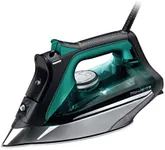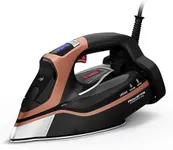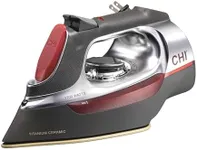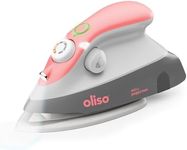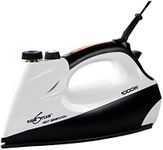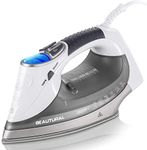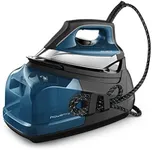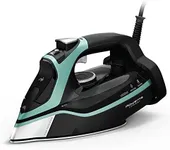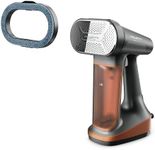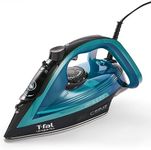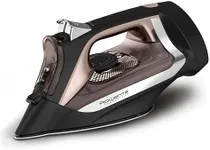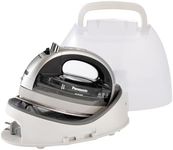Buying Guide for the Best Iron For Quilters
Choosing the right iron for quilting is important because it can make your quilting projects easier, faster, and more enjoyable. Quilters need an iron that can handle frequent use, provide consistent heat, and offer features that help with pressing seams and fabrics of different thicknesses. When shopping for an iron, focus on the features that will help you achieve crisp, flat seams and smooth fabric, while also being comfortable to use for longer periods.Soleplate MaterialThe soleplate is the flat, heated surface of the iron that comes into contact with your fabric. Its material affects how smoothly the iron glides and how evenly it distributes heat. Common materials include stainless steel, ceramic, and non-stick coatings. Stainless steel is durable and glides well, making it a popular choice for quilters. Ceramic heats evenly and is less likely to stick to fabric, while non-stick coatings are easy to clean but may wear off over time. If you work with delicate fabrics or want an iron that moves smoothly over seams, a ceramic or high-quality stainless steel soleplate is a good choice.
Steam OutputSteam output refers to how much steam the iron produces, which helps relax fabric fibers and remove wrinkles. For quilters, a strong and adjustable steam output is useful for pressing seams and flattening thick layers. Irons typically offer continuous steam and a burst-of-steam feature. Low steam is fine for delicate fabrics, while high steam is better for thick cottons and multiple layers. If you often work with heavy fabrics or need to press stubborn seams, look for an iron with powerful and adjustable steam settings.
WeightThe weight of the iron affects how much pressure you need to apply when pressing. Heavier irons can press seams flat with less effort, which is helpful for quilting, but they may be tiring to use for long sessions. Lighter irons are easier to maneuver but may require more passes to get seams crisp. If you have a lot of pressing to do or struggle with hand fatigue, try to find a balance—a medium-weight iron is often ideal for most quilters.
Temperature ControlTemperature control lets you adjust the heat to suit different fabrics. Some irons have simple dial controls, while others offer digital settings for more precision. For quilting, it's important to have a range of temperatures, especially if you work with both delicate and heavy fabrics. If you use a variety of materials, choose an iron with easy-to-read and adjustable temperature settings so you can avoid scorching or damaging your fabric.
Water Tank CapacityThe water tank holds the water used for steam. A larger tank means you can iron longer without refilling, which is convenient for big quilting projects. However, a larger tank can also make the iron heavier. If you often work on large quilts or want to avoid frequent refills, look for an iron with a bigger water tank, but make sure the added weight is still comfortable for you.
Auto Shut-OffAuto shut-off is a safety feature that turns the iron off if it’s left idle for a certain period. This is especially important for quilters who may get distracted or step away from their work. Some irons shut off after a few minutes of inactivity, while others have adjustable timers. If safety and peace of mind are important to you, choose an iron with a reliable auto shut-off feature.
Cord Length and SwivelThe length and flexibility of the cord affect how easily you can move the iron around your workspace. A longer cord gives you more freedom, and a swivel cord prevents tangling. If your ironing board is far from an outlet or you need to move around a lot, look for an iron with a long, swivel cord for maximum convenience.


